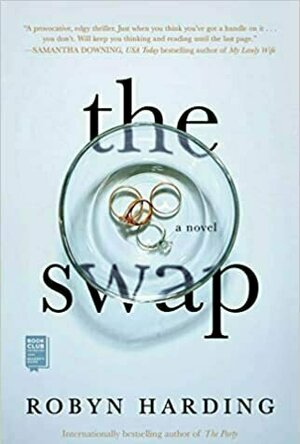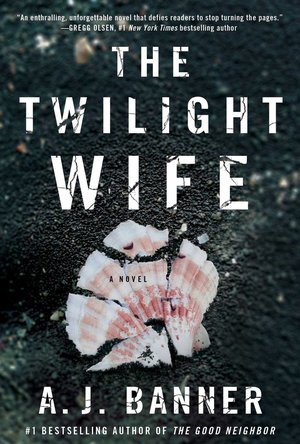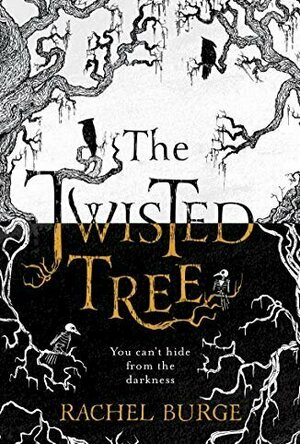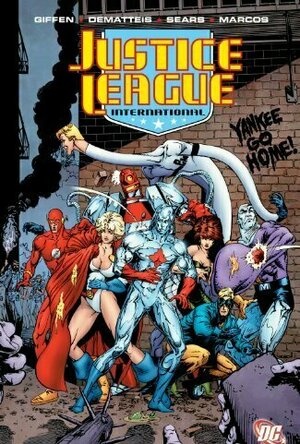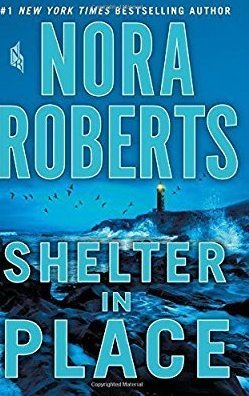Search
Search results

Creating Wealth Video Podcast with Jason Hartman | No-Hype Real Estate Investing Strategies for Achieving Financial Freedom
Podcast
Companion to Jason Hartman’s highly acclaimed Creating Wealth Show (audio podcast) Learn fresh new...

Family Farm Seaside
Games
App
Play the best farming simulation game! Create your own unique farm in Family Farm Seaside and...

Perfect/Imperfect: Embracing Natural Design in Bali
Book
The home designs of Alejandra Cicneros mark a significant departure from the tropical 'Bali' style...
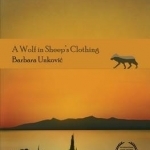
A Wolf in Sheep's Clothing
Book
Barbara Unkovi? is a keen and perceptive observer of the human condition, as her previous...
Low Morrison grows up on an isolated island, known for its free-loving ways. Her parents take this to the next level, living a polyamorous life that leaves Low embarrassed, ashamed, and a social outcast. When she spots the beautiful Freya at her school, she's enthralled. She sees Freya hanging up signs for a pottery class and knows she must join. She's Freya's only student and quickly becomes besotted with her teacher. Freya has no problem sharing all of her secrets and desires with her young apprentice. That's until Freya meets Jamie, who owns a local shop in town. The two become quick friends, leaving Low feeling left out and an outcast once again. One night Freya and her husband Max invite Jamie and her husband Brian over for dinner; they have no idea a jealous Low is lurking in the shadows. The foursome partake in drugs and a crazy night occurs, changing their lives forever. It also gives Low a chance to hold something over their heads.
This was a slightly insane and improbable thriller that I sped through in an entire day. It was fast-paced and nearly impossible to put down, as you just knew the characters were hurtling toward disaster. It's filled with a variety of fairly unsympathetic characters, though I felt for Low, unwanted in her own busy family and toyed with by Freya, who cares only for herself.
"I'd had to share all my life. I was done with it."
The story is told from Low's perspective, along with Brian, Jamie, and Max. We never hear directly from Freya, whom all of these characters seem to hold on a pedestal. Why exactly, we can never be sure, as she seems self-centered and cruel, playing with and torturing each of them to get exactly what she wants.
I found this to be a spellbinding read--it pulls you in as only Harding can do. Low's obsession, Freya's narcissism, Jamie's naivete. We can sense it all combining into something propulsive and horrible.
Overall, while I didn't love this one quite as much as The Arrangement, Harding's previous novel, I still enjoyed it. It's a fast-paced and creepy read, plus it's different and fun. 4 stars.
This was a slightly insane and improbable thriller that I sped through in an entire day. It was fast-paced and nearly impossible to put down, as you just knew the characters were hurtling toward disaster. It's filled with a variety of fairly unsympathetic characters, though I felt for Low, unwanted in her own busy family and toyed with by Freya, who cares only for herself.
"I'd had to share all my life. I was done with it."
The story is told from Low's perspective, along with Brian, Jamie, and Max. We never hear directly from Freya, whom all of these characters seem to hold on a pedestal. Why exactly, we can never be sure, as she seems self-centered and cruel, playing with and torturing each of them to get exactly what she wants.
I found this to be a spellbinding read--it pulls you in as only Harding can do. Low's obsession, Freya's narcissism, Jamie's naivete. We can sense it all combining into something propulsive and horrible.
Overall, while I didn't love this one quite as much as The Arrangement, Harding's previous novel, I still enjoyed it. It's a fast-paced and creepy read, plus it's different and fun. 4 stars.
Leanne Crabtree (480 KP) rated Mine to Keep (Mine, #2) in Books
Jan 6, 2021
I received this ARC in exchange for an honest review.
This follows the events of the last one with Skye and Trace on an island as Trace tries to help Skye get over the terrible ordeal she suffered at the hands of her ex. Soon after they arrive back in Chicago, they are met by an old colleague of Trace’s who warns them that someone is coming after them. Then the intrigue begins…
This one focuses more on Trace and things that happened in his past that he wishes he could forget. I was intrigued to find out what he’d done that was so bad that someone was trying to get to him and Skye. To get to him through Skye. And I’ll tell you now I wasn’t quite expecting it to be that.
We see bits from the POV of the person after Trace and it’s slightly creepy how cold the person is at the thought of killing anyone who stood in his way.
Once again the books feature some really intense sex scenes between the two main characters and shows how they struggle to keep their relationship afloat as lies come out of the woodwork that have been buried for years.
I’m lucky that the author goes over a lot of the things that happened in the previous book because I will admit I read a lot of books and it’s sometimes hard to remember what happened in certain ones.
It all came back to me within the first 15% or so and then I could get on with my detective work of trying to figure out who was behind it all. It kept me guessing throughout, just like in the first one and I found myself going “Ooooooh!” as new information was uncovered. I was most definitely intrigued by this. Well done to the author for such brilliant writing!
I really enjoyed this, believe it or not it got better the more I read. That last 15% or so made it 5 star worthy for me!
If you plan on reading this, then read Mine to Take first as this is a continuation. If you enjoyed the first then you should definitely read this one too.
This follows the events of the last one with Skye and Trace on an island as Trace tries to help Skye get over the terrible ordeal she suffered at the hands of her ex. Soon after they arrive back in Chicago, they are met by an old colleague of Trace’s who warns them that someone is coming after them. Then the intrigue begins…
This one focuses more on Trace and things that happened in his past that he wishes he could forget. I was intrigued to find out what he’d done that was so bad that someone was trying to get to him and Skye. To get to him through Skye. And I’ll tell you now I wasn’t quite expecting it to be that.
We see bits from the POV of the person after Trace and it’s slightly creepy how cold the person is at the thought of killing anyone who stood in his way.
Once again the books feature some really intense sex scenes between the two main characters and shows how they struggle to keep their relationship afloat as lies come out of the woodwork that have been buried for years.
I’m lucky that the author goes over a lot of the things that happened in the previous book because I will admit I read a lot of books and it’s sometimes hard to remember what happened in certain ones.
It all came back to me within the first 15% or so and then I could get on with my detective work of trying to figure out who was behind it all. It kept me guessing throughout, just like in the first one and I found myself going “Ooooooh!” as new information was uncovered. I was most definitely intrigued by this. Well done to the author for such brilliant writing!
I really enjoyed this, believe it or not it got better the more I read. That last 15% or so made it 5 star worthy for me!
If you plan on reading this, then read Mine to Take first as this is a continuation. If you enjoyed the first then you should definitely read this one too.
BookInspector (124 KP) rated The Twilight Wife in Books
Sep 24, 2020
The main character Kyra, confused after diving incident and trying to figure out what happened. The whole story was told from only Kyra’s perspective and other characters didn't have their voice in it. That's unfortunate, because it would've been interesting to hear Jacob's thoughts about the whole situation, which was going on in the book and what was his relationship with the friend from his childhood. Maybe a throwback to the past? All this would’ve given the whole book more twists and suspense, I believe. The characters were not very interesting to be honest; they were not very strong and did not have very charismatic personalities. I noticed that, if a male character looks perfect in the pages, there is something not quite right with him, in this case the same, Jacob was too perfect. Even though Aiden (a mystery man) should’ve been one of the important characters in the whole story, his actions were nonexistent, even at the end he was the most passive one. <br/><br/> I really enjoyed that in every chapter there used to be at least one memory coming back. The suspense was really well thought through, giving those recovered memories like little sips of water in the desert. Unfortunately, the whole plot in this novel is not very original. I saw couple of films with the same principal, but the suspense kept me interested and it was hard to put it away. There is very visible touch of author's life in the book, as she lives by the ocean. There are lots of terms of marine biology in this publication, which got me looking up some terms because I never faced them in my normal life. All the suspense throughout the book was nicely rewarded at the end of it, I really enjoyed it and I loved the fact, that it still left you hanging with some unanswered questions. It had a lot of turns and twists which didn't leave u bored and kept the book interesting. To conclude, I would recommend this book if You would like some twisty and suspenseful novel filled with island life and marine biology.
BookInspector (124 KP) rated The Twisted Tree in Books
Sep 24, 2020
Martha is our protagonist in this novel, and this book is told from her perspective. I really liked Martha, she is different, she is blind in one eye and marked with a scar that makes her doubt herself. There is no very wide selection of characters, but all of them are very intriguing. I really liked Stig (the boy who ran away from his home) in this book as well. He is strange but at the same time very sweet and likeable. One thing that I really don’t understand is the need for kids to consume alcohol in books. Why? In this case, it did not bring anything to the story, so I think it could’ve been left out. :/
I really liked the way the author combined different themes in this book. We have modern day youth entwined with ancient mythology, magic, demons and souls, and topped up with a little bit of romance. It was a dark and spooky read, the whole setting of this novel feels isolated and gloomy, set in a little island in Norway during winter, where snowstorms rattle the whole house. It is a tiny book, so the story is really fast-paced and filled with interesting turns and twists. I really enjoyed how the author analysed the family relationships through our main characters. It was heartbreaking but very amusing at the same time.
I really liked the writing style of this novel, it is easy to understand, but it delivers a lot of new things to me. There is plenty of Norwegian mythology in this novel, and I think the author has done a great job with the research. The chapters were a decent length and didn’t feel draggy, and I absolutely loved the artwork used in this novel, it made the reading experience more enjoyable. The ending was nicely written, but it left me with many unanswered questions. What happened to Martha and Stig? Who is going to water the tree? Etc.
So, to conclude, it was a really good read, filled with unique and different characters, as well as action-filled and entertaining plot, where magic and scary ghosts are only a few steps away, hidden in the Twisted Tree.
I really liked the way the author combined different themes in this book. We have modern day youth entwined with ancient mythology, magic, demons and souls, and topped up with a little bit of romance. It was a dark and spooky read, the whole setting of this novel feels isolated and gloomy, set in a little island in Norway during winter, where snowstorms rattle the whole house. It is a tiny book, so the story is really fast-paced and filled with interesting turns and twists. I really enjoyed how the author analysed the family relationships through our main characters. It was heartbreaking but very amusing at the same time.
I really liked the writing style of this novel, it is easy to understand, but it delivers a lot of new things to me. There is plenty of Norwegian mythology in this novel, and I think the author has done a great job with the research. The chapters were a decent length and didn’t feel draggy, and I absolutely loved the artwork used in this novel, it made the reading experience more enjoyable. The ending was nicely written, but it left me with many unanswered questions. What happened to Martha and Stig? Who is going to water the tree? Etc.
So, to conclude, it was a really good read, filled with unique and different characters, as well as action-filled and entertaining plot, where magic and scary ghosts are only a few steps away, hidden in the Twisted Tree.
Joe Goodhart (27 KP) rated Justice League International, Vol. 5 in Books
Nov 30, 2020
I've been enjoying this trip down Memory Lane. The 80s were a fun time, especially the comics! I remember I couldn't get enough "Bwa-hahahaha", i.e. anything JLI, JLA, or JLE-related, in my life! When they brought then-newcomer Adam Hughes on as artist, JLA got turned out up to 11! Unfortunately, this was not that volume; that's the next volume)!
When I think back to this point in the 80s, the fun times, laugh riot that was the JLA brings a great amount of joy to my collective consciousness. I can't even remember anything I didn't like about any of the stories in the run. Then, I started reading Vol. 5..
So, yeah, the characters were still great fun! I miss the fun Wally West/Flash! :( Giffen and DeMatteis continued to churn out some of the funniest JLA stories! The JLEurope ones weren't AS funny as the JLAmerica/JLI stories were, but still fun nonetheless.
Now, the art? OOF! That's a whole other thing! I don't recall disliking it when I first read the issues in the 80s. I can recall meeting Bart Sears at a comic shop signing around the time of the series debut, and I thought he was friendly and likeable.
However, after this re-visit, I am disappointed to say that I found Sears' art to be not as enjoyable. The characters, both male and female, looked distorted and, in some cases, wicked muscular. And the facial expressions? Um, NO! Yeah, the art was enough of a disappointment that I almost gave it 2 Stars.
The saving grace of this TPB was the last story, from JLI Annual #3, "Around the World with the Justice League". Not only was it the first appearance of the island of Kooeykooeykooey, but it also featured some knockout pencils from Mike McKone and even more stellar inks from Bruce D. Patterson! if memory serves, the team of McKone-Patterson continued to do the annuals for the remainder of the JLI/JLA run.
It's not a perfect TPB, but again, the writing was on target, and the art in the last part of the book was pretty solid. Overall, you can read it, but it won't wow ya! Jus' sayin'...
When I think back to this point in the 80s, the fun times, laugh riot that was the JLA brings a great amount of joy to my collective consciousness. I can't even remember anything I didn't like about any of the stories in the run. Then, I started reading Vol. 5..
So, yeah, the characters were still great fun! I miss the fun Wally West/Flash! :( Giffen and DeMatteis continued to churn out some of the funniest JLA stories! The JLEurope ones weren't AS funny as the JLAmerica/JLI stories were, but still fun nonetheless.
Now, the art? OOF! That's a whole other thing! I don't recall disliking it when I first read the issues in the 80s. I can recall meeting Bart Sears at a comic shop signing around the time of the series debut, and I thought he was friendly and likeable.
However, after this re-visit, I am disappointed to say that I found Sears' art to be not as enjoyable. The characters, both male and female, looked distorted and, in some cases, wicked muscular. And the facial expressions? Um, NO! Yeah, the art was enough of a disappointment that I almost gave it 2 Stars.
The saving grace of this TPB was the last story, from JLI Annual #3, "Around the World with the Justice League". Not only was it the first appearance of the island of Kooeykooeykooey, but it also featured some knockout pencils from Mike McKone and even more stellar inks from Bruce D. Patterson! if memory serves, the team of McKone-Patterson continued to do the annuals for the remainder of the JLI/JLA run.
It's not a perfect TPB, but again, the writing was on target, and the art in the last part of the book was pretty solid. Overall, you can read it, but it won't wow ya! Jus' sayin'...
Leanne Crabtree (480 KP) rated Shelter in Place in Books
Jan 12, 2021
I bought two chucky paperbacks by Nora Roberts at the same time a few months ago, this and Come Sundown.
This one starts with Simone and her two friends going to the cinema to watch a film together. Simone goes to the toilet and minutes later hears screams and gunshots coming from the room she'd just left. She phones the police as three people go through the mall, killing as many people as they can. Simultaneously, Reed is working at one of the restaurants in the mall and as the shooters begin their killing spree he comes to the rescue of a little boy who's crying for his mum and keeps him safe until the cops arrive and take out the shooters.
Fast forward several years and survivors of the attack start to be killed off one by one and it seems Simone and Reed are on the killers list
I will start by saying that romantic suspense's are not my favourite genre. It has taken me about a month and a half to finish this. The romance definitely felt like an afterthought since it only kicked in about the half way point by which point I was just reading to see them take down the bad guy - whose POV we saw regularly throughout - and whose comeuppance felt like a bit of a disappointment. It all happened within about five pages from them making themselves known to Simone to them being incapacitated.
It's a 500+ page book! The first half was the two main survivors growing up and finding their calling in life - and I was rather bored, hence it taking me over a month to read! - the second half was a really played down romance while the killer made her way through the rest of the survivors on her meandering journey to them on Tranquillity Island.
I normally really enjoy reading Nora Roberts' books but I think I'll stick to her traditional romances and away from romantic suspense's in the future. Come Sundown and this one will be making there way to a charity shop for others to enjoy.
This one starts with Simone and her two friends going to the cinema to watch a film together. Simone goes to the toilet and minutes later hears screams and gunshots coming from the room she'd just left. She phones the police as three people go through the mall, killing as many people as they can. Simultaneously, Reed is working at one of the restaurants in the mall and as the shooters begin their killing spree he comes to the rescue of a little boy who's crying for his mum and keeps him safe until the cops arrive and take out the shooters.
Fast forward several years and survivors of the attack start to be killed off one by one and it seems Simone and Reed are on the killers list
I will start by saying that romantic suspense's are not my favourite genre. It has taken me about a month and a half to finish this. The romance definitely felt like an afterthought since it only kicked in about the half way point by which point I was just reading to see them take down the bad guy - whose POV we saw regularly throughout - and whose comeuppance felt like a bit of a disappointment. It all happened within about five pages from them making themselves known to Simone to them being incapacitated.
It's a 500+ page book! The first half was the two main survivors growing up and finding their calling in life - and I was rather bored, hence it taking me over a month to read! - the second half was a really played down romance while the killer made her way through the rest of the survivors on her meandering journey to them on Tranquillity Island.
I normally really enjoy reading Nora Roberts' books but I think I'll stick to her traditional romances and away from romantic suspense's in the future. Come Sundown and this one will be making there way to a charity shop for others to enjoy.
